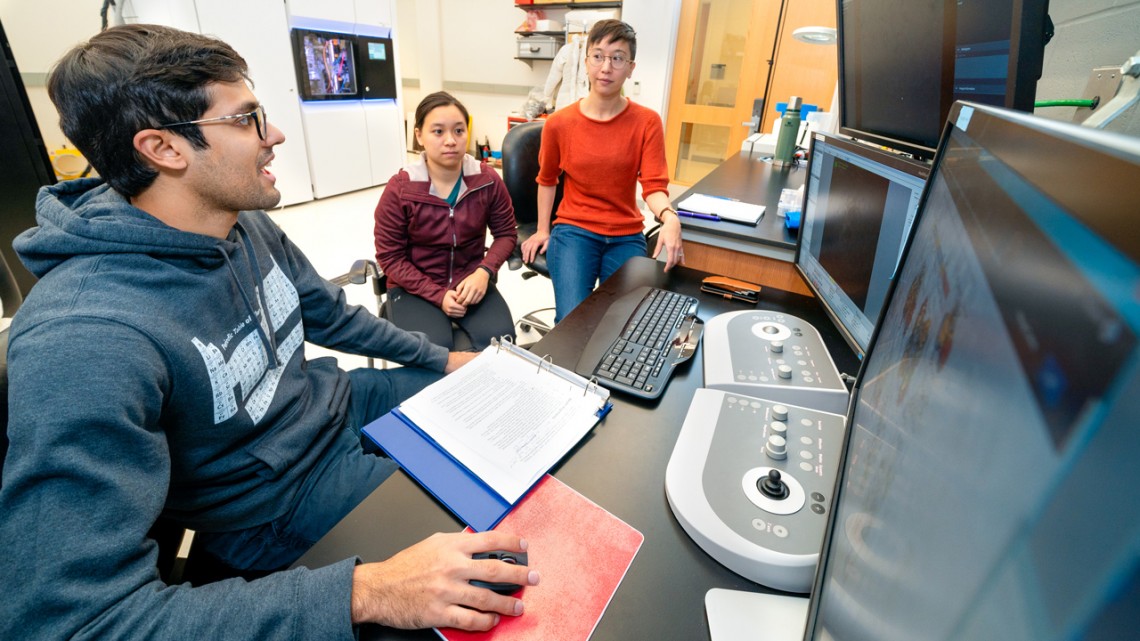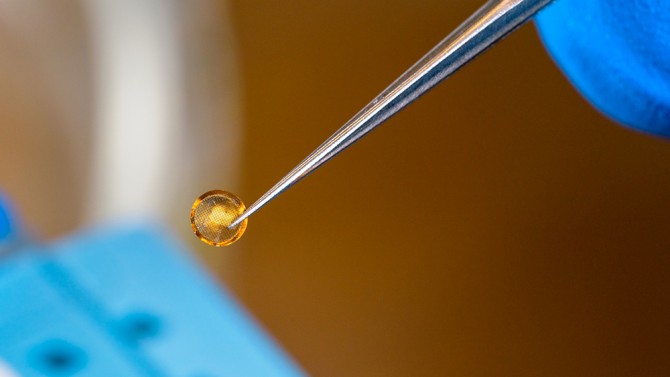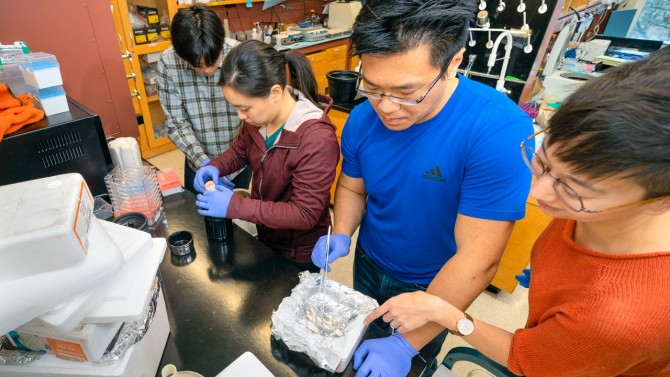
Cornell’s cryogenic electron microscope, background, glows blue to show it is in a cooled state while Liz Kellogg, right, discusses a molecular structure with lab members Eshan Mehrotra ’21, left, and Tiffany Chen ’22.
Biologist’s research offers insight on molecular structures
By Kate Blackwood
Elizabeth H. Kellogg, assistant professor of molecular biology and genetics in the College of Arts and Sciences, considers herself an explorer.
She devises and refines techniques for looking at the unmapped terrain within cells so she can discover molecular structures so small they are challenging to detect – yet essential to understanding cell function.
Using cryo-electron microscopy (cryo-EM), Kellogg has made recent discoveries that add to our knowledge of Alzheimer’s disease and the fundamental mechanisms of DNA recombination. “Every time you get to see a new structure,” she said, “you get a small window into a new world.”
The protein structures Kellogg studies are much smaller than the wavelength of light, making visualization a major challenge. Cryo-EM freezes samples very quickly, capturing particles in action. This allows her to study the natural movement of proteins by preserving a full range of their motions.
In October, she published a study in Nature, collaborating with biochemist Donald Rio from the University of California, Berkeley, that reports the structure of the P element transposase, which contributes to understanding the fundamental molecular mechanisms that recombine, or “shuffle,” DNA.
Transposases are proteins that “cut and paste” genetic material from one location in the genome to another, contributing to genetic diversity. P element transposase is present in the genome of Drosophila – the fruit fly.
“We want to understand the fundamentals underlying DNA recombination,” Kellogg said. “This study reveals new and unexpected insight into the process of transposition and the diversity of evolved strategies to carry out DNA recombination.”
In earlier research, Kellogg used cryo-EM to add to our understanding of Alzheimer’s disease. In a 2018 study published in Science, Kellogg visualized the healthy operation of tau, which she calls “a flexible, dynamic protein” that is important for neurological development.
In a healthy state, tau associates with structures called microtubules in brain cells. But when tau proteins fail to bind with these structures, they create tangles of protein inside brain cells, contributing to the progression of Alzheimer’s disease and other forms of dementia.
Kellogg’s work with tau combined cryo-EM with advanced computational protein modelling, a new technique she is developing.
“We are at the beginning of an avalanche of new insights on how biology works at the molecular level,” Kellogg said. “At the same time, we are beginning to expand on what cryo-EM can really achieve. I’m excited for what we will be able to do with this in the future and the new structural insights that will be revealed by this powerful technique.”
Kate Blackwood is a writer for the College of Arts and Sciences.
Media Contact
Get Cornell news delivered right to your inbox.
Subscribe


